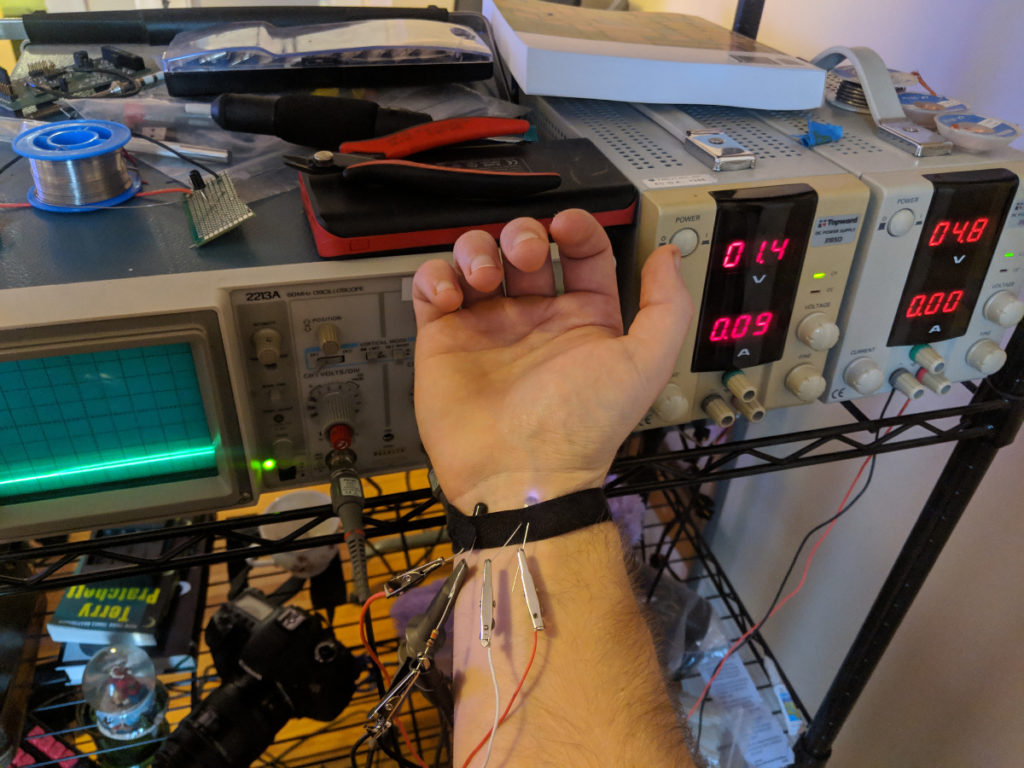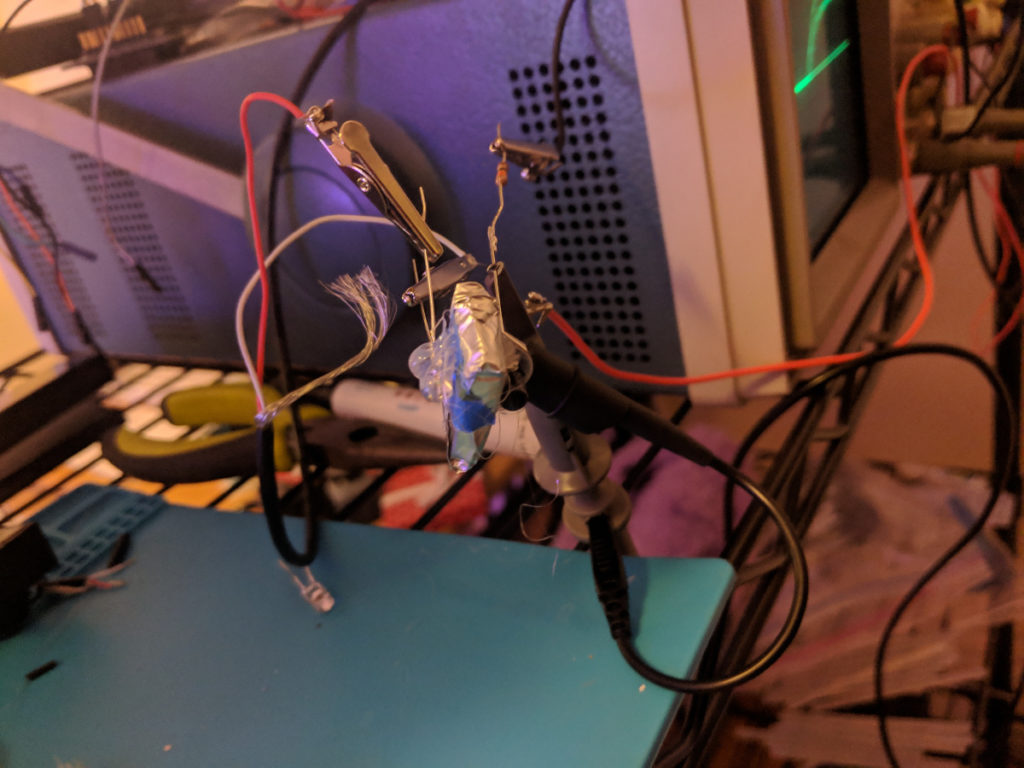In which I trudge through some simple tests and realize it helps to read a bit before starting things. Today I tried to make a very very simple photoplethysmogram (light-enlargment-gram). Flesh is relatively transparent to red and infrared light, and that changes with the amounts of blood in one’s tissue. This can be used to measure heart rate. The light absorption of hemoglobin changes depending on whether it is attached to oxygen or not. This can be used to measure heart rate too, as well as oxygen saturation (pulse oximetry).
https://en.wikipedia.org/wiki/Photoplethysmogram (PPG)
https://en.wikipedia.org/wiki/Pulse_oximetry
A nice combination of sensors for a wearable watch+ring would be PPG, perifereal temperature and galvinic skin response. I spent a couple of hours trying to get a basic PPG with some IR LEDs and photodiodes. Unfortunately I charged ahead without reading anything and now realize that PPGs are done differently from what I had assumed. Basically, I was just trying to measure IR light reflected (diffusely) by tissue over time.
I bought some 940 nm IR LEDs and photodiodes and made a photointerrupter as a test (read: pointed them at each other and looked at voltages as I put my hand between them). I also played with them as a distance sensor by reflecting the IR off of objects. This was neat.

Unfortunately there was no obvious change in reflected IR during a heartbeat when they were pointed into my wrist. I moved them much closer, which caused the diode to always be saturated. I then tried it with a shield around the IR led made of tin foil, securing them together with hot glue. The diode was always saturated in this case as well.

I then tried seperating them with a peice of cardboard. This worked and generated a very small signal fluctuating with my heart beat when it was pressed against flesh. I’m not confident that this was PPG as opposed to just changes in distance and pressure.
For PPG beyond wikipedia:
Takeways:
- For PPG, only 940nm is displayed (as above).
- Finger tips are the best position (assuming transmission here).
- Strain gauges have been used to measure heart rate.
For pulse oximetry:
https://www.sciencedirect.com/science/article/pii/S2405959516301205#br000015
Oximetry is done with a pair of LEDs, a red (660 nm) and an IR one (940nm). Hemoglobin with oxygen absorbs more infrared (NOTE: the paper has an error here “more infrared light (660 nm wavelength) and lesser red light (940 nm wavelength) than Hb.” reverses the frequencies compared to the colors).

The ratio of the varying to constant intensities of each LED color is calculated, and the ratio of the two ratios is compared to an empirical fitting to give the saturated O2 levels. Measuring this accurately by reflection is hard, the paper reads as a failure (“presents challenges”), but heart rate is easier than oxygen saturation.